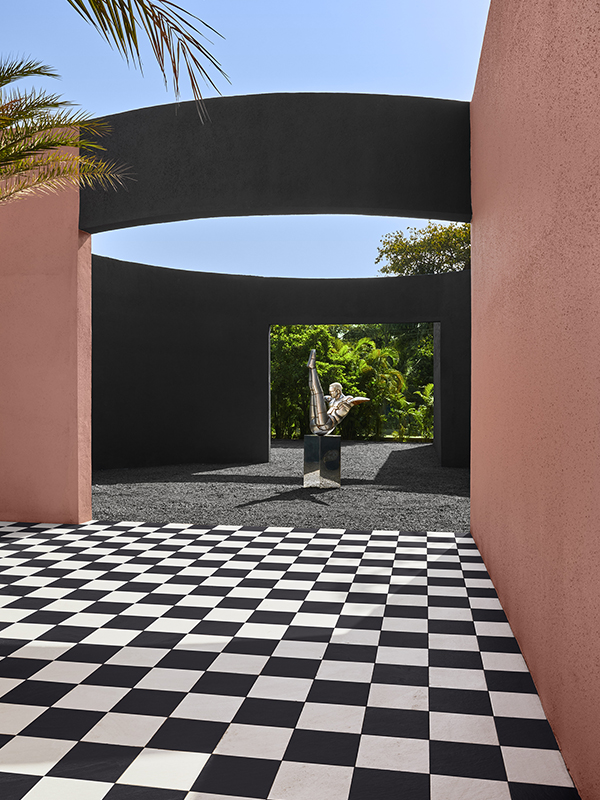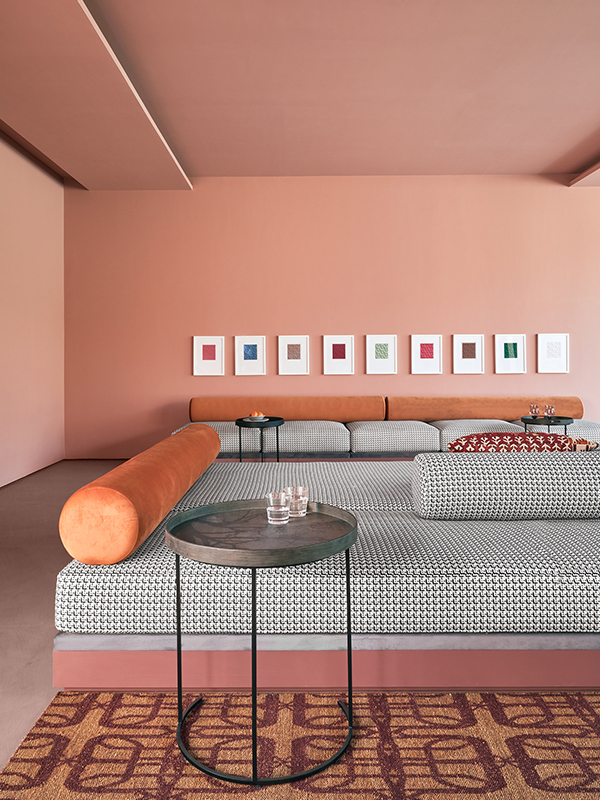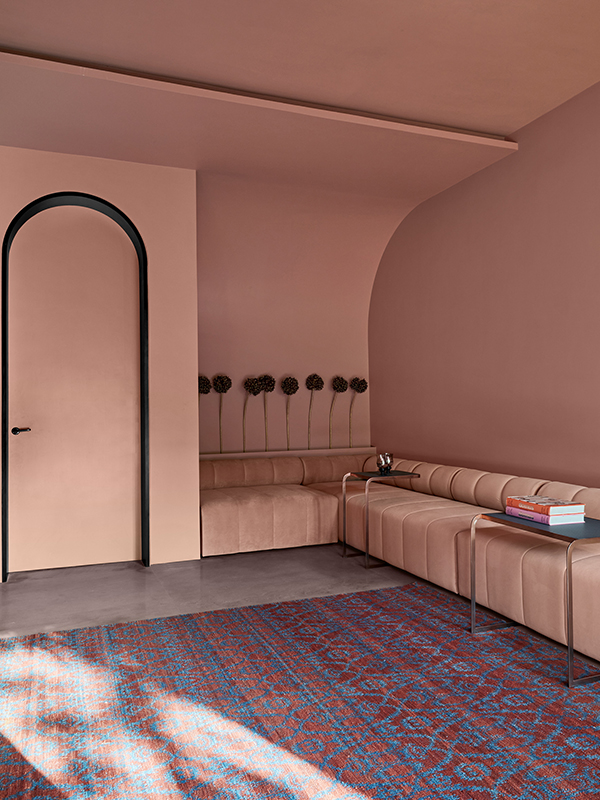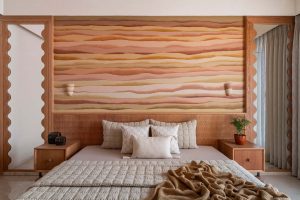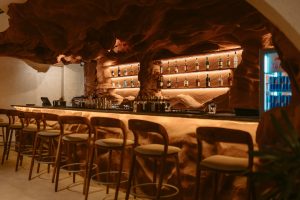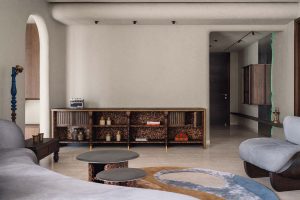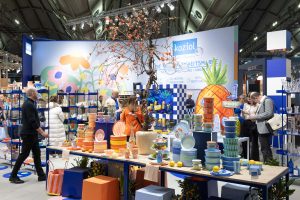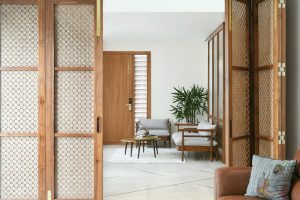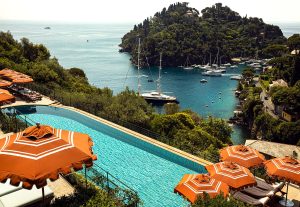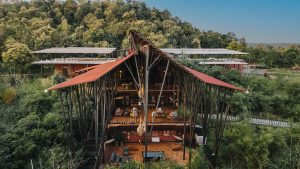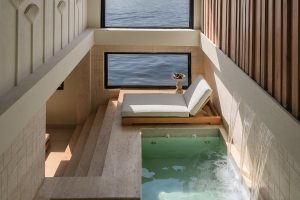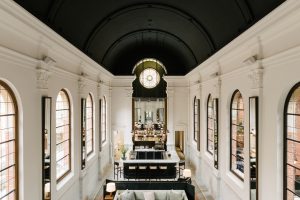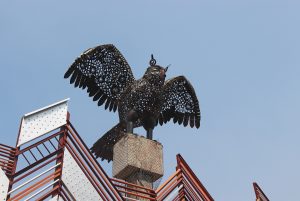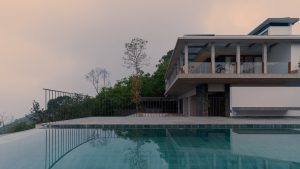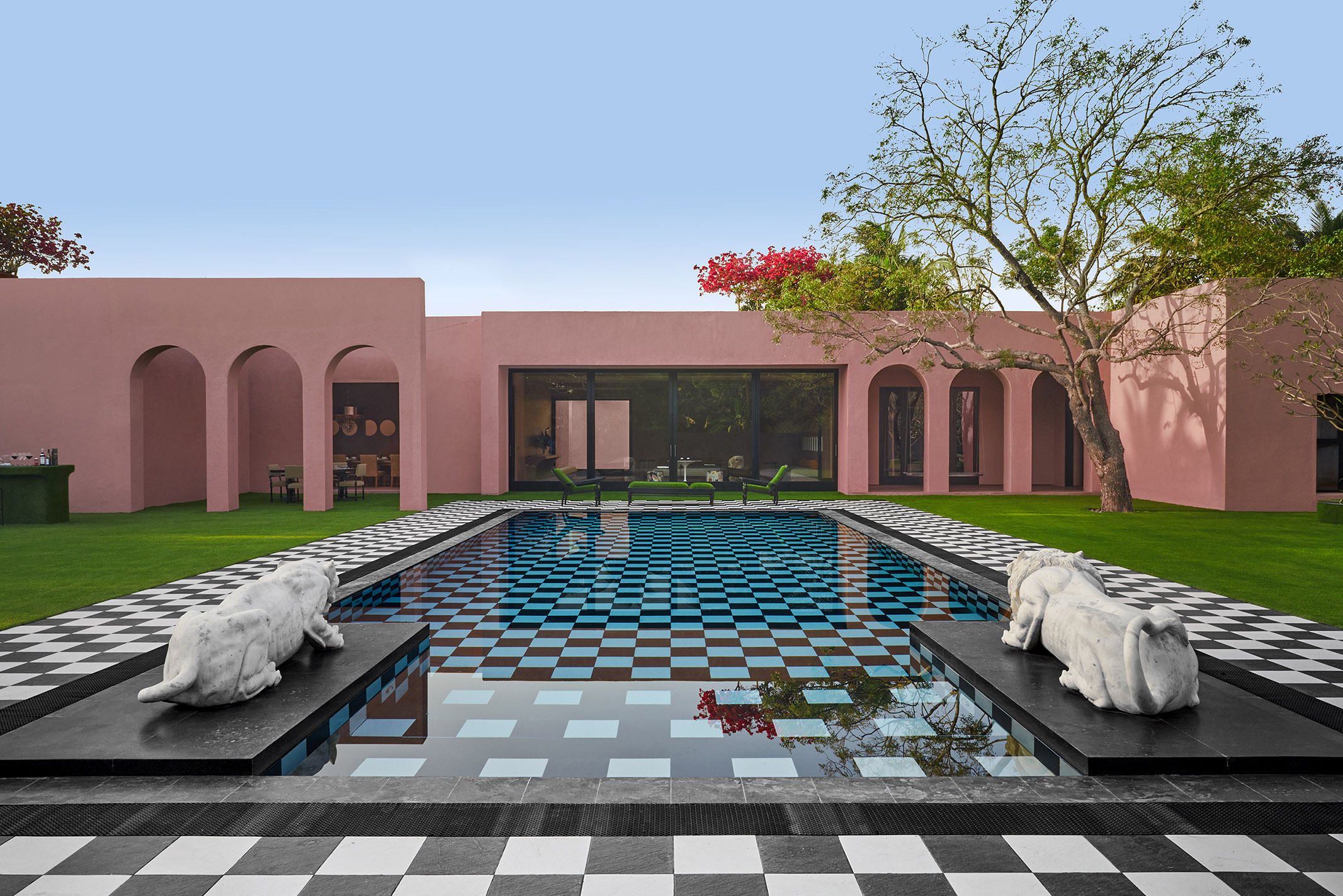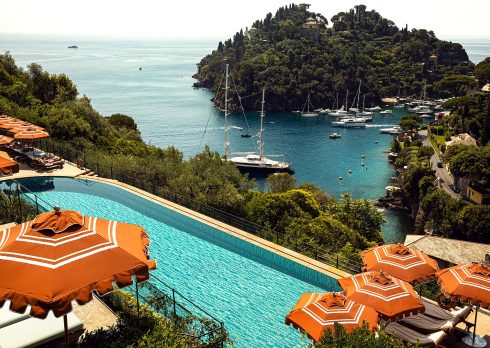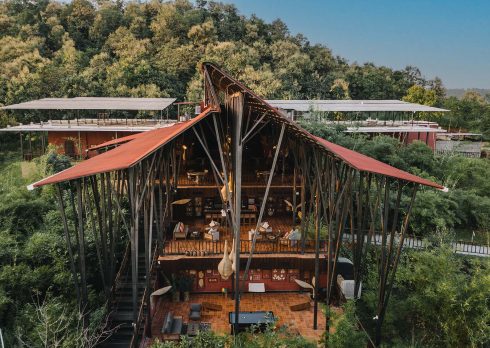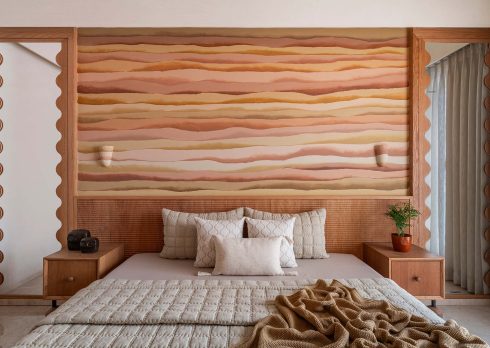Alibaug’s Hottest New Holiday Villa Is Pinakin Patel’s Ode To Essentialism
Veteran designer Pinakin Patel’s latest project in Alibag is a testament to authenticity. It is a reflection of unrestrained creativity backed by a fundamental awareness of and respect for the process of designing. Eschewing trends for their inherently ephemeral nature, Patel directs his attention towards mindful consumption, contextual design, and the philosophy of essentialism, all while creating a timeless space that is undeniably picture worthy. This larger-than-life holiday villa is the newest addition to the coastal town’s bevy of hotels, homestays, and AirBnbs, while also adding to the designer’s portfolio of personal ventures in Alibag that include The Dashrath Patel Museum and his namesake furniture store.
On a surface level, Pinakin Prive is an Instagrammer’s paradise. The sprawling, dusty pink property is punctuated by bold chequered tiles atop a fresh green lawn. A deeper examination, however, reveals a certain complexity to these design choices. The seamless pink flooring is in fact, made up of Agra red stone – one of the many areas in which Patel consciously decided to incorporate local materials as far as possible. The lawns are layered with Astroturf (a synthetic substitute to real grass) in an endeavour to significantly cut down on the amount of water that would have had to have been brought to the site to maintain it. In addition, the turf doubles up as a permeable, protective cover that retains ground moisture on hot days. Patel also exercised his inventive resourcefulness by using the leftover turf as upholstery on the outdoor furniture.
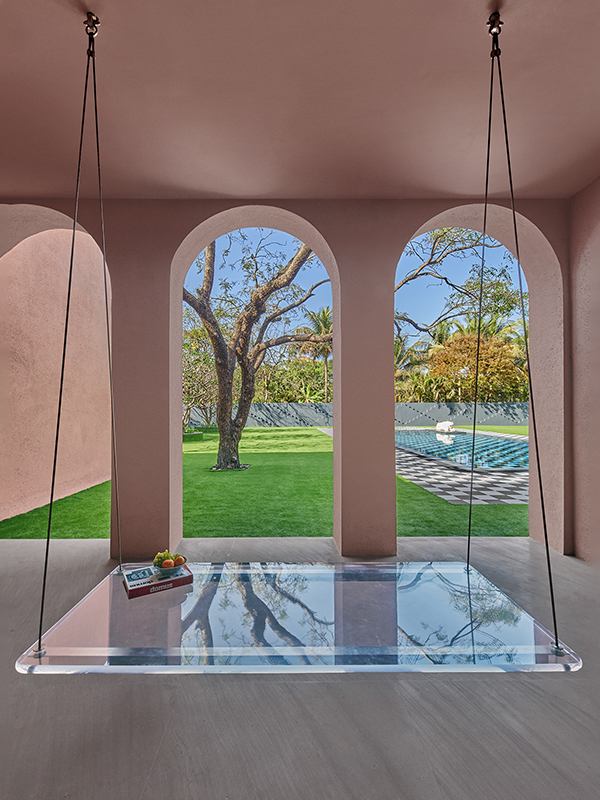
In designing the space, Patel has masterfully coalesced contemporary, millennial design sensibilities with his cultural roots. Pinakin Prive has been built in line with the tenets of Vaastu, which allows for the southwest heat and rain to enter the home through the back, whereas the large pivot doors and windows facing the northeast open to a cool, sunny view outside. An ideal of essentialism is evinced throughout the interiors and exteriors of the villa, which is pared down to only that which is intrinsically required. In Patel’s book, this excludes even wardrobe doors! Instead, elegant brass wardrobe rails fitted into the walls serve the function perfectly. The seamlessness in design lends itself to an uncomplicated fluidity which runs through the space. “For me, one of the most unique elements of Pinakin Prive is being able to live within the design without worrying about maintenance,” says Patel.
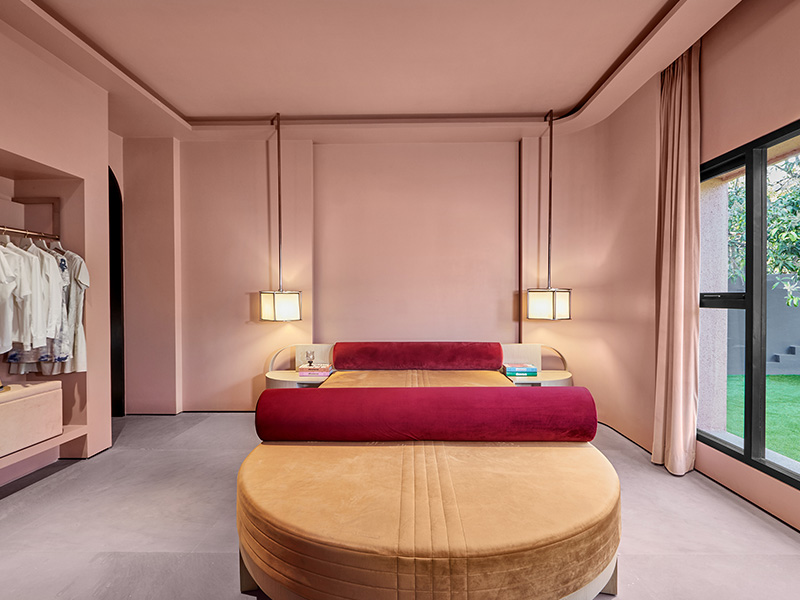
To say that the design of the villa is pared down in an essentialist fashion is not to imply a disregard for finesse. In fact, the attention afforded to every single detail in both the interiors and exteriors is nothing short of immaculate. Patel takes his visual colour story seriously, and expertly matches together every shade of pink used across the villa – allowing the walls to flow into the drapes and extend onto the flooring and furniture. The clean curves in his architectural composition are reflected in distinct areas like the arches out on the front facade and the rounded interior walls, but also find their way into subtle elements like the furniture edges and bathroom mirrors. For the scrupulous designer, no detail is too small to acknowledge.
The villa itself is an airy five-bedroom structure with large windows and strategic openings to allow ample amounts of sunlight to stream through as well as a complete immersion into the landscape. An earthy palette of pinks and oranges is contrasted by matte black elements and brass detailing – varying proportions of which make up different areas in the interior. The furniture and lighting used throughout the villa have been custom made by the designer’s own furniture label, Pinakin. Patterned rugs from Bhadohi Carpets line the stone floors, whereas velvet drapes from F&F add to the textural richness of the space. The two-tone bathrooms combine the raw with the refined, while playfully experimenting with form, material, and visual contrast. Decidedly spacious, they were designed in a manner that does not trap in humidity – a key factor in areas by the sea.

When it comes to decorating, Patel does not follow a strict code. “I am a collector myself,” he says. “By the time I am ready with a space, I start trying out stuff that would embellish an otherwise thematic setting.” Apart from a few pieces of framed artwork by the designer himself, African tribal masks in the living room, and single-stemmed flowers in the den, Patel has kept the accessorization to a minimum as an extension to his philosophy of essentialism.
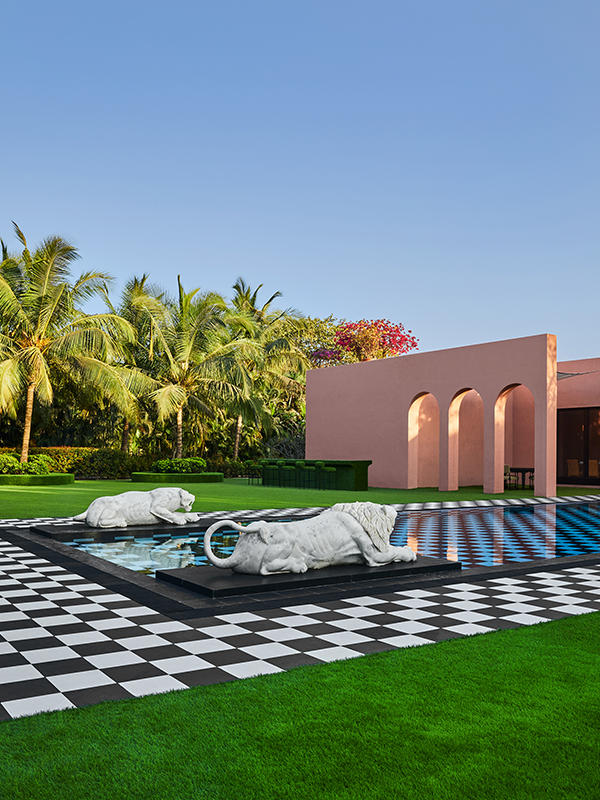
The highlight of the lawns is a dramatic, monochrome pool flanked by two magnificent marble statues from Manglam Arts. These crouched lions sport a distinct intricacy that is consciously absent from the rest of the property. Set against the clean, minimalist architecture of the villa and the bold geometry of the pool, the meticulous statues take on a life of their own. Alongside the pool lie the Astroturf-covered seating areas and bar counter which appear almost as extensions of the lawn from the ground up. A striking metal sculpture from The Charcoal Project takes its place at the centre of the gravelled driveway, which connects Pinakin Prive to the quaint town that lies beyond. In an age where the narrative of social media increasingly shapes trends, Pinakin Prive stands as emphatic proof of the fact that mindful and sustainable design need not be somber, that traditional resources can be made refreshingly modern, and that sometimes, essentialism can be all the luxury one could need.
